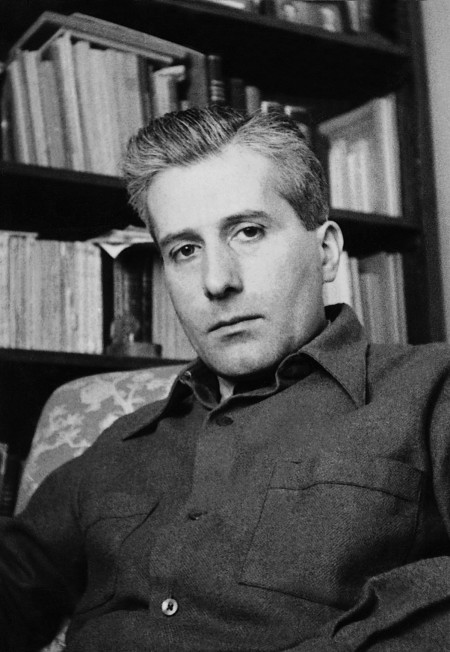 Photo: Owned by the National Széchényi Library
Photo: Owned by the National Széchényi Library
1 February 1907, Cluj Napoca - 4 March 1992, Bern
The professional fields of Sándor Veress - composer, ethnomusicologist, professor of composition and pianist – unambiguously indicate the spiritual-artistic continuity of 20th century history of Hungarian music among the first generation of the followers of Bartók and Kodály. Veress, who was composition student of Kodály and pursued the last term of his piano studies with Bartók, joined the conceptual program of his masters as a first representative. As a result of his multifaceted artistic and scientific preparation, Veress became creative personality (Veress premieres at IGNM festivals 1935, 1937), ethnomusicologist (folk music collection in Moldva in 1930, assistant of Bartók at the Hungarian Academy of Sciences) and pedagogue of music (successor of Kodály as a composition professor at the Academy of Music between 1943-1949) of outstanding significance in the 1930s already. He made effort from his young age to acquire contemporary western European musical styles, as a result of his numerous study trips (Berlin, London, Amsterdam and Rome); he became one of the broadest minded, internationally acknowledged representative of new Hungarian music. Regarding the originality and quality of his unfolding work as composer and ethnomusicologist – according to the consonant judgment of his masters and contemporaries, as well – he represented the most significant personality of the disciple-generation. These contemporary values prevailed directly at the climax of his creational period in Hungary in 1948-1949: in the following year of the establishment of the Kossuth Prize Sándor Veress was awarded – after Zoltán Kodály had received that first - this top level national honor. That was a result of the tragic turning point of our history that the artist being at the climax of the unfolding of his artistry, considered the political abuses began that time unacceptable, and similarly to many of his artist and scientist colleagues chose emigration.
According to that decision Sándor Veress' career was divided to two periods, almost equal in time: he lived the first 42 years within the Hungarian musical life, the second in Bern, Switzerland in emigration. In the compositional approach of his first period a synthesis of the tradition of Hungarian folk music and a contrapuntal construction based on the Italian vocal polyphony prevailed (Térszili Katicza - ballet, Violin Concerto, the oratorio titled Szent Ágoston zsoltára az eretnekek ellen [The Psalm of Saint Augustine Against the Heretics], Threnos). He became a more and more intensively dedicated follower of the technique of twelve-tone technique after his emigration although in the interpretation of that he preserved his personal artistic conception. The oeuvre of Sándor Veress is versatile; the more significant part of it is represented by instrumental works. His songs and choruses conceived by folk music had determinative significance at his Hungarian period, while his vocal compositions were composed in the context of different motivations of contents and genres during the Swiss years. Concertos and chamber works have leading role in his works from Switzerland such as Hommage a Paul Klee fantasy, Piano Concerto, Passacaglia concertante, String Quartet Concerto, Clarinet Concerto, and concertos for two trombones and also the Musica concertante, Orbis tonorum, Cello Sonata and Piano Trio and further works written for unique chamber ensembles. His most significant vocal work is the Elegie on a poem by Vogelweide, accompanied by chamber ensemble; and the Glasklangespiel, a composition for large chorus on the poems of Hermann Hesse which is a symmetric answer to the Szent Ágoston Zsoltára.
The life achievement of Veress is unique, having individual significance on its own and in the context of the preceding (Bartók, Kodály) and succeeding (Ligeti, Kurtág) generations, as well, which created a personal synthesis of the Hungarian national musical traditions and the European intentions (second Viennese school) in the last two-thirds of our century.
The pedagogic activity of Veress also left long-lasting mark in the history of the Swiss and Hungarian music pedagogy: György Ligeti, György Kurtág, Lajos Vas and others could declare themselves as his composition students at the Academy of Music in Budapest, and made indelible impact on the unfolding of the careers of Heinz Holliger, Heinz Marti and Jürg Wittenbach.
Sándor Veress took the Swiss citizenship only in the last months of his life, during his severe, long illness. His life achievement was an example of the fulfillment of an artist preserving the artistic unity of the Hungarian musical culture, at a European level.
B. M.


